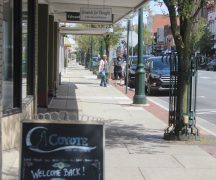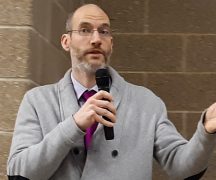By JAN LARSON McLAUGHLIN
BG Independent News
The mass exodus of BGSU students from Bowling Green could cost the city in the U.S. Census.
“Absolutely” the city is worried, said Bowling Green Planning Director Heather Sayler. “We’re very concerned, especially with students told to go back home.”
BGSU’s spring enrollment this year hit a high of 19,331. And the city of Bowling Green counts on the census to reflect the number of people using city services.
Much rests on the census count, which is mandated by the U.S. Constitution every 10 years..
The numbers gathered will determine how the 435 congressional seats are divided among the states.
Because Ohio is losing population relative to some other states, it is projected to lose one seat when Congress is reapportioned. The census numbers will also help determine how the state’s congressional district lines as drawn.
The census results also will determine how nearly $675 billion in federal funding is dispersed annually.
The count affects funding for education, health care, transportation, social services, emergency responders, plus services for elderly and for people with disabilities. Businesses are also able to use the information to decide where to put or expand operations.
“That helps us get our block grant money,” Sayler said.
BGSU staff was working closely with the U.S. Census to make sure all the students in residence halls were counted.
But when BGSU students were asked to return to their homes in order to prevent the spread of COVID-19, the difficult job of getting an accurate count got even harder.
According to census rules, people are to complete the survey in the community where they live the majority of the year.
“We’re servicing them here the most,” Sayler said.
BGSU officials are sending information to students, advising them that they need to be counted in the community where they spend the majority of their time, she said.
But Sayler is concerned that parents of many students may feel that they should count their students at their homes since they moved back home after coronavirus concerns grew.
“Our hope is people respond to their invitations in the mail,” she said. “But there are a lot of ‘what ifs.’”
Less than one week ago, the 2020 Census fully kicked off, and invitations continue to arrive in mailboxes across the nation. As of Wednesday morning, more than 11 million households have responded, according to U.S. Census Bureau Director Steven Dillingham.
To help slow the spread of COVID-19, the 2020 Census field operations will be suspended for two weeks until April 1. In late May, census takers around the nation will begin visiting households that have not yet responded to the 2020 Census to help complete the count.
The public is strongly encouraged to respond to the 2020 Census online using a desktop computer, laptop, smartphone, or tablet, and can also respond by phone or mail.
This past Sunday, the Census Bureau announced several adaptations to operations to accommodate recent scheduling changes on college campuses as actions are taken to keep students and faculty safe.
Bureau personnel will begin using phone calls instead of in-person visits.
New this time is the ability for residents to respond online, in addition to by mail. Responses are required from all U.S. residents.





